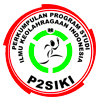Validitas Dan Reliabilitas Instrumen Observasi Terhadap Penilaian Teknik Servis Atas Dalam Sepaktakraw
Abstract
This research is to assist coaches in assessing the technical implementation of serves and their relationship to achieving the main aspects of service movements in sepaktakraw. The purpose of the study is to validate the observation instrument to assess the technical implementation of the top service in Sepaktakaw. This observation instrument can be used to assess progress in relation to achieving important aspects of movement in each service. Methods: Construction of the validity and reliability of this observation instrument is carried out in four phases. The first phase is the study of literature that specifically review the construction of observation instruments. The second stage, the instrument construction was established. The third stage, the validity coefficient of the instrument's content is determined by Aiken V and 9 experts with qualifications, level of understanding, conformity of words, and relevance of the statement, etc. (with a rating scale of 1-4). The internal validation of the instrument is calculated and applied by 18 athletes, quantitatively tested using the product moment correlation. The fourth stage, the reliability of the instrument is calculated using Cronbach's Alpha reliability test. Results: The result of this study indicates that the instrument has optimal value of content and internal validity. In addition, the instrument also has a high reliability value. Conclusion: The results of this study can be used in similar circumstances. More than that, these instruments can be considered measuring instruments to be utilized by the trainer, the teacher as an assessment of the ability of top service techniques
Downloads
References
Cronbach, L. J. (1951). Coefficient alpha and the internal structure of tests. Psychometrika, 16(3), 297–334. https://doi.org/10.1007/BF02310555
Embretson, S. (2007). Construct validity: A universal validity system or just another test evaluation procedure? Sage Journals, 36(8), 449–455. https://doi.org/10.3102/0013189X07311600
Hsu, C., assessment, B. S.-P., research, undefined, & 2019, undefined. (2007). The Delphi technique: making sense of consensus. Scholarworks.Umass.EduCC Hsu, BA SandfordPractical Assessment, Research, and Evaluation, 2019•scholarworks.Umass.Edu, 12, 10. https://doi.org/10.7275/pdz9-th90
Jawis, M. N., Singh, R., Singh, H. J., & Yassin, M. N. (2005). Anthropometric and physiological profiles of sepak takraw players. British Journal of Sports Medicine, 39(11), 825–829. https://doi.org/10.1136/BJSM.2004.016915
Marpaung, H. (n.d.). PENGARUH MODEL LATIHAN SERVIS DAN PANJANG TUNGKAI TERHADAP KEMAMPUAN KETEPATAN SERVIS PUNGGUNG PADA ATLET REMAJA. Eprints.Uny.Ac.Id.
Newman, I., Lim, J., Methods, F. P.-J. of M., & 2013, undefined. (2013). Content validity using a mixed methods approach: Its application and development through the use of a table of specifications methodology. Journals.Sagepub.ComI Newman, J Lim, F PinedaJournal of Mixed Methods Research, 2013•journals.Sagepub.Com, 7(3), 243–260. https://doi.org/10.1177/1558689813476922
Putra, Z. G., & Agus, A. (2021). Pengaruh Latihan Peregangan Terhadap Kelentukan Atlet Sepaktakraw Balai Baru Takraw Club (Bbtc) Kota Padang. JURNAL STAMINA, 4(9), 393–402.
Raga, Z. A. (2014). Analisis gerakan servis atas dalam permainan sepak takraw berdasarkan konsep biomekanika. Jurnal Pendidikan Olah Raga, 3(1), 94–103.
Rashid Aziz, A., Chuan Teh Khoo Teck Puat Hospital, K., Rashid AZIZ, A., Teo, E., Tan, B., & Kong Oiuan, T. (2003). Sepaktakraw: A descriptive analysis of heart rate and blood lactate response and physiological profiles of elite players. Researchgate.NetAR Aziz, E Teo, B Tan, TK ChuanInternational Journal of Applied Sports Sciences, 2003•researchgate.Net, 15(1), 1–10.
Rivaldi, R., Rifki, M. S., & Yendrizal, Y. (2021). Korelasi Somatotype Dengan Kelincahan Atlet Sepak Takraw Psti Padang Panjang. JURNAL STAMINA, 4(9), 358–392.
Rowe, A., Wright, S., Nyland, J., Caborn, D. N. M., & Kling, R. (1999). Effects of a 2-hour cheerleading practice on dynamic postural stability, knee laxity, and hamstring extensibility. Journal of Orthopaedic and Sports Physical Therapy, 29(8), 455–462. https://doi.org/10.2519/JOSPT.1999.29.8.455
Rowe, G., & Wright, G. (2001). Expert Opinions in Forecasting: The Role of the Delphi Technique. 125–144. https://doi.org/10.1007/978-0-306-47630-3_7
Sari, R. N., & Indika, P. M. (2019). Analisis Asupan Gizi Atlet Sepak Takraw Unit Pelaksana Teknis Daerah Kebakatan Olahraga Sumatera Barat. JURNAL STAMINA, 2(9), 282–288.
Vernon, W., & Vernon, W. (2013). The Delphi technique: A review. Https://Doi.Org/10.12968/Ijtr.2009.16.2.38892, 16(2), 69–76. https://doi.org/10.12968/IJTR.2009.16.2.38892
Widhiarso, W. (2015). Melibatkan rater dalam pengembangan alat ukur. SSRN, 2(1), 1.
Xiao, Z., Tang, F., Zhao, Y., Han, G., Yin, N., Li, X., Chen, B., Han, S., Jiang, X., Yun, C., Zhao, C., Cheng, S., Zhang, S., & Dai, J. (2018). Significant Improvement of Acute Complete Spinal Cord Injury Patients Diagnosed by a Combined Criteria Implanted with NeuroRegen Scaffolds and Mesenchymal Stem Cells. Cell Transplantation, 27(6), 907–915. https://doi.org/10.1177/0963689718766279
Yousuf, M. (2007). The delphi technique. Openriver.Winona.Edu, 20.
Copyright (c) 2023 Hakim Irwandi Marpaung, Danuditya Purna Atmaja, Rismaidah Purba, Ainul Ghurri

This work is licensed under a Creative Commons Attribution-ShareAlike 4.0 International License.









